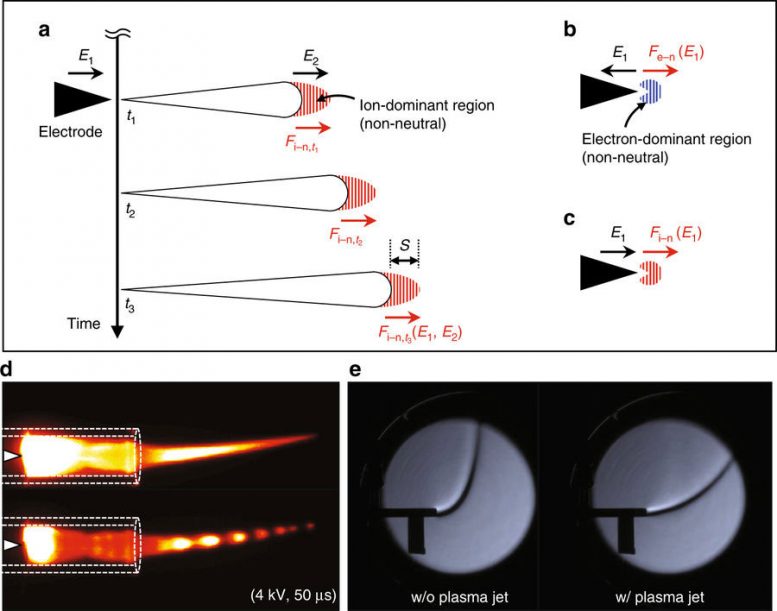
A simple illustration of EHD force generation via different mechanisms. The schematic of EHD force generation by a positive pulsed streamer propagation driven by (positive) ion and the presented space charges behind the moving front, where E1 and E2 represent external and internal electrical fields, respectively. The cases of EHD force generation by b electron drift in negatively pulsed plasma jets or c ion drift in positively pulsed plasma jets are presented. d A plasma jet image in continuous mode and composite image of nanosecond-resolved images are presented along with a schematic of the experiment with the glass tubing and electrode. e The jet of free gas flow without plasma has a flow trajectory or free jet boundary, which is imaged by Schlieren photography, and this trajectory changes when the plasma discharge is turned on, thereby providing information on the flow parameters. The glass tubes with an inner diameter of 3.5 mm are used as substitute for scale bars for all images. Sanghoo Park, et al., Nature, doi:10.1038/s41467-017-02766-9
A KAIST team identified the basic principle of electric wind in plasma. This finding will contribute to developing technology in various applications of plasma, including fluid control technology.
Professor Wonho Choe from the Department of Physics and his team identified the main principle of neutral gas flow in plasma, known as ‘electric wind’, in collaboration with Professor Se Youn Moon’s team at Chonbuk National University.
Electric wind in plasma is a well-known consequence of interactions arising from collisions between charged particles (electrons or ions) and neutral particles. It refers to the flow of neutral gas that occurs when charged particles accelerate and collide with a neutral gas.
This is a way to create air movement without mechanical movement, such as fan wings, and it is gaining interest as a next-generation technology to replace existing fans. However, there was no experimental evidence of the cause.
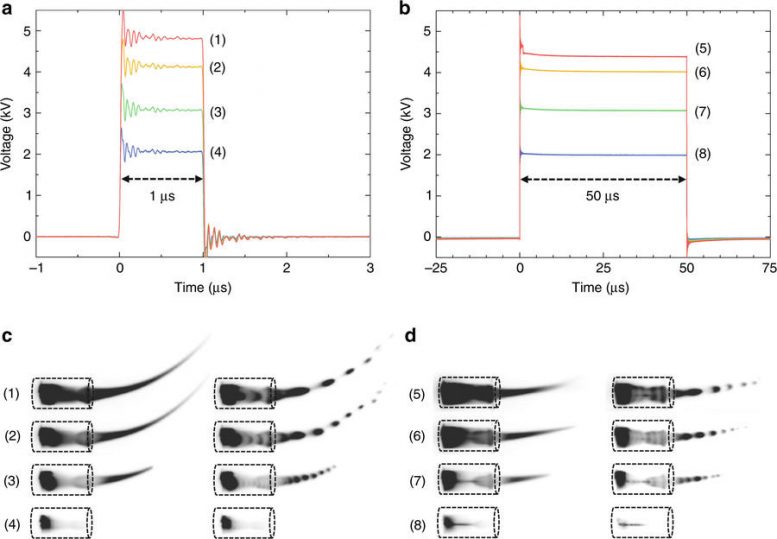
Voltage waveforms with different pulse widths and heights. Voltage pulses having pulse widths of a 1 μs and b 50 μs at different pulse heights applied to the electrode. Time-integrated (left column) and composite nanosecond-resolved (right column) plasma emission images at c 1 μs and d 50 μs; specific voltage heights are denoted by numbers in this figure. The glass tubes with an inner diameter of 3.5 mm are used as substitutes for scale bars for all images. Sanghoo Park, et al., Nature, doi:10.1038/s41467-017-02766-9
To identify the cause, the team used atmospheric pressure plasma. As a result, the team succeeded in identifying streamer propagation and space charge drift from electrohydrodynamic (EHD) force in a qualitative manner.
According to the team, streamer propagation has very little effect on electric wind, but space charge drift that follows streamer propagation and collapse was the main cause of electric wind.
The team also identified that electrons, instead of negatively charged ions, were key components of electric wind generation in certain plasmas.
Furthermore, electric wind with the highest speed of 4 m/s was created in a helium jet plasma, which is one-fourth the speed of a typhoon. These results indicate that the study could provide basic principles to effectively control the speed of electric wind.
Professor Choe said, “These findings set a significant foundation to understand the interactions between electrons or ions and neutral particles that occur in weakly ionized plasmas, such as atmospheric pressure plasmas. This can play an important role in expanding the field of fluid-control applications using plasmas which becomes economically and commercially interesting.”
Reference: “The creation of electric wind due to the electrohydrodynamic force” by Sanghoo Park, Uros Cvelbar, Wonho Choe and Se Youn Moon, 25 January 2018, Nature Communications.
DOI: 10.1038/s41467-017-02766-9


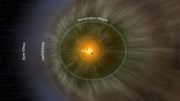
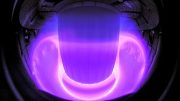
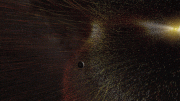
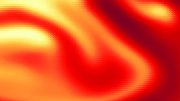
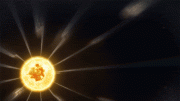
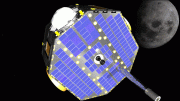
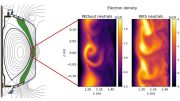
How to make human robot.
Don’t we already have enough of those?